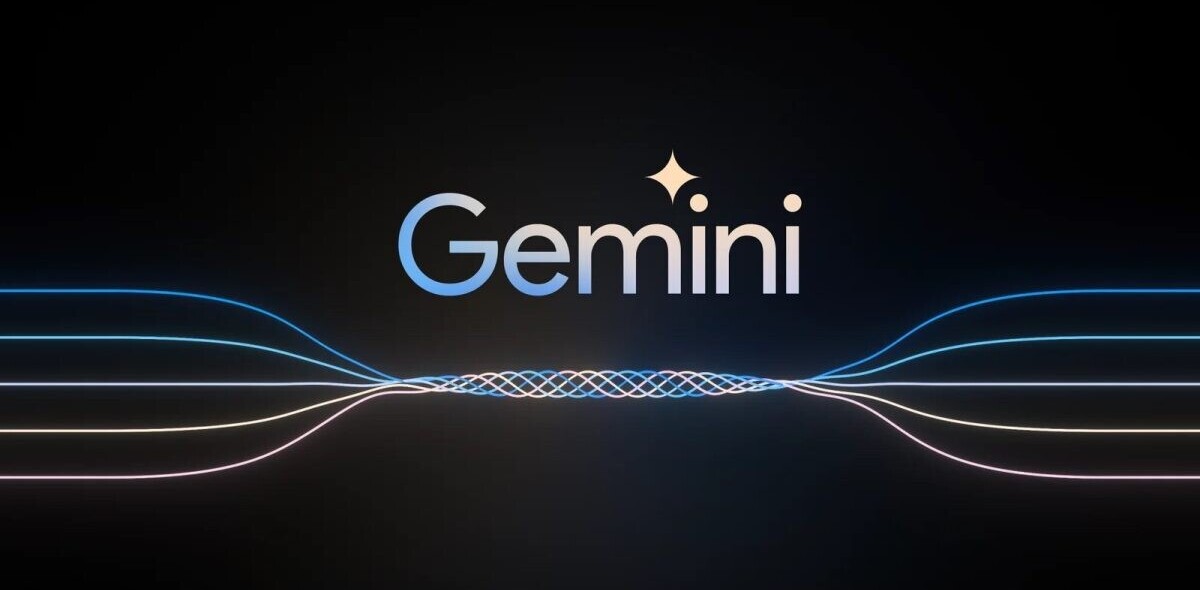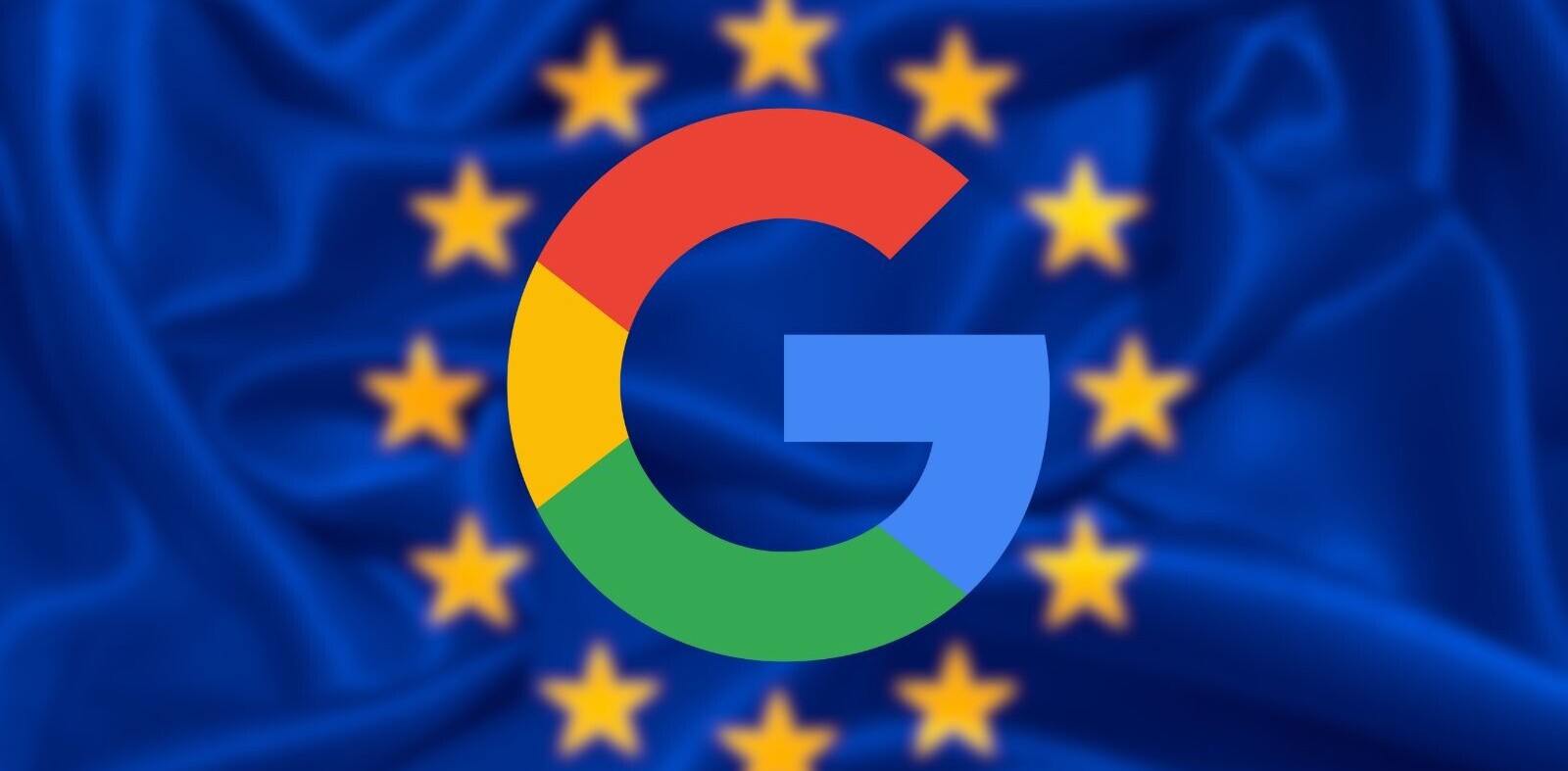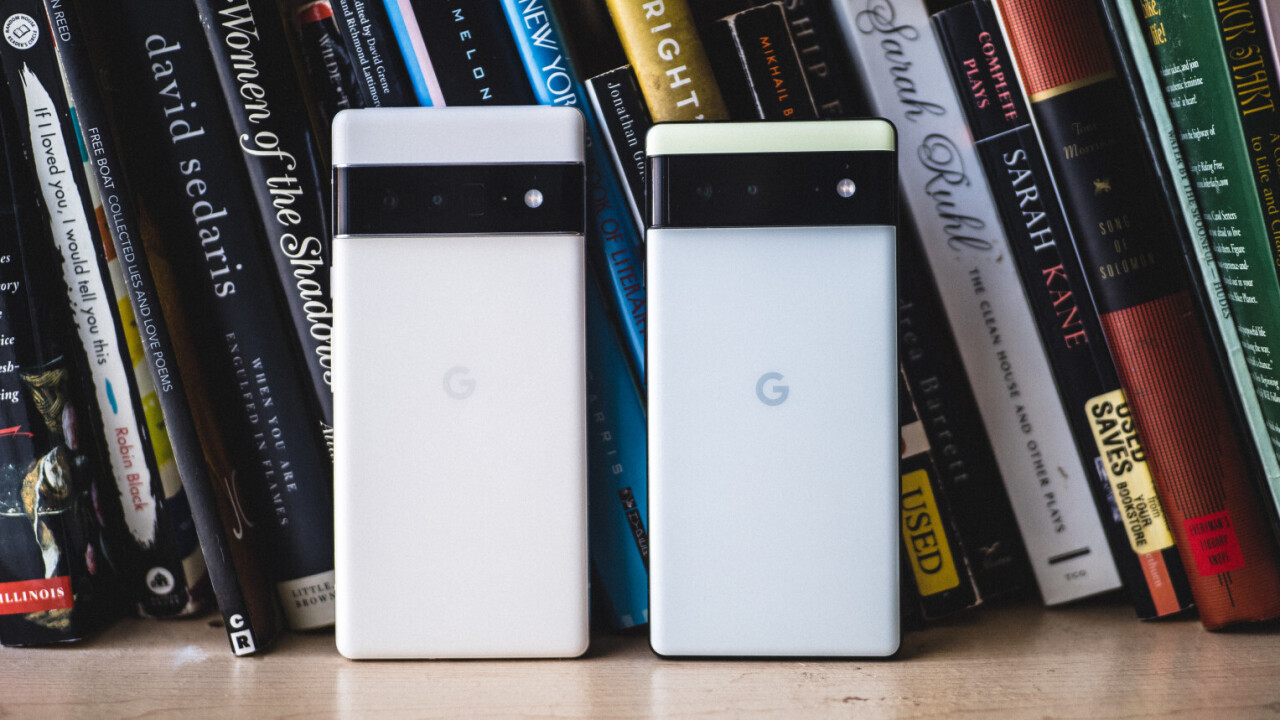
It’s no surprise the Pixel 6 and Pixel 6 Pro are launching today. The company already revealed the phones a few months ago, and today basically serves as a confirmation for the myriad of additional leaks we’ve had so far. Still, it’s nice to see some concrete evidence that Google has finally started to take its phones’ hardware seriously.
We’ve had our hands on the new phones for a couple of days now, and while we’re not able to share a full review yet, it’s evident that this is the most exciting phone from Google in years. And it certainly doesn’t hurt that the Pixel 6 is starting at just $599, undercutting the vast majority of flagship phones, with the larger Pixel 6 Pro going for $899. The Pixel 6 is even cheaper than last year’s Pixel 5 with its relatively wimpy specs.
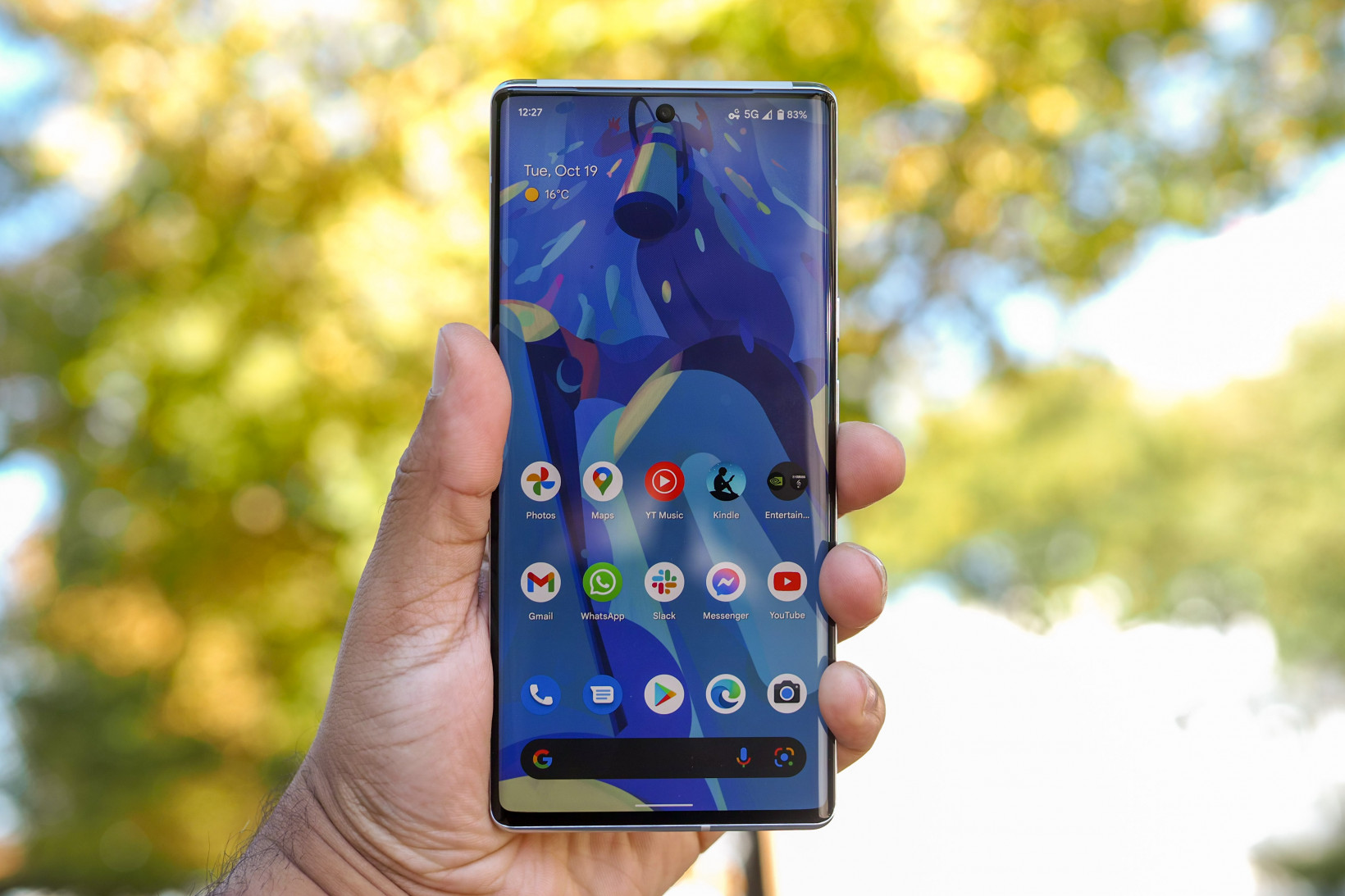
I liked the Pixel 5, mind you. It was far from the flagship phones of the year, but it got most of the basics right. But with the Pixel 6 and Pixel 6 Pro, Google aims higher, looking to match or exceed the competition in specs, design, and software.
Specs
Let’s confirm those final specs once and for all.
Here are some of the highlights for the Pixel 6:
- 6.4-inch OLED panel with flat edges
- 1080 x 4200 resolution
- 90 Hz refresh rate
- Google Tensor Processor
- 8GB RAM
- 128/256 GB storage configurations
- Gorilla Glass Victus front panel, Gorilla Glass 6 on the rear
- 4,614 mAh battery for “beyond 24-hour battery life”
- 30W quick charging (brick sold separately), 50% in 30 minutes
- 23W wireless charging
- Titan M2 Processor
- IP68 water resistance
- 50 MP F1.85 wide camera with a massive 1/1.31″ sensor and optical image stabilization
- 12MP F2.2 ultrawide camera
- 8MP F2.0 selfie camera
- 7x Super Res Zoom
- HDR 4K 60 FPS video, 240 fps slow-mo
- Wifi 6E support
The Pixel 6 Pro features largely the same specifications, with a few key differences:
- 6.7-inch LTPO OLED display with slightly curved edges
- 1330 x 3120 resolution
- 120Hz adaptive refresh rate
- 12 GB RAM
- 128/256/512 GB storage configurations
- Gorilla Glass Victus on the rear as well as the front
- 5,000 mAh battery
- 48MP F3.5 telephoto camera with 4x optical zoom, 1/2″ sensor size
- 11.1MP F2.2 ultrawide selfie camera
- 20X Super Res Zoom
- Ultra-wideband radio for accurate object location and positioning.

I appreciate that Google didn’t cripple the cheaper phone very much. For most people, the difference is going to boil down to one simple thing: do you want a telephoto camera? Most of the other specs on the Pro are just nice bonuses.
The highlight here is Google Tensor. While we won’t know for sure how it compares to Qualcomm’s ubiquitous Snapdragon 888 and Apple’s A15 without more testing, the more important detail is that it allows Google to have tighter integration between hardware and software than ever before. It also allows Google to promise at least 5 years of security updates.
Design
The Pixel 6 family takes a completely new approach to aesthetics, one that is in some ways more reminiscent of the Nexus 6P than previous Pixel Phones.
I dig it.
Both models are rather similar, especially from the rear. The most obvious design element is the large camera bar, housing the new massive sensors, and showing that Google is really serious about imaging this time around. The camera bar is flanked by two panes of glass above and below it in slightly different shades — it’s a neat design that looks like nothing else out there.
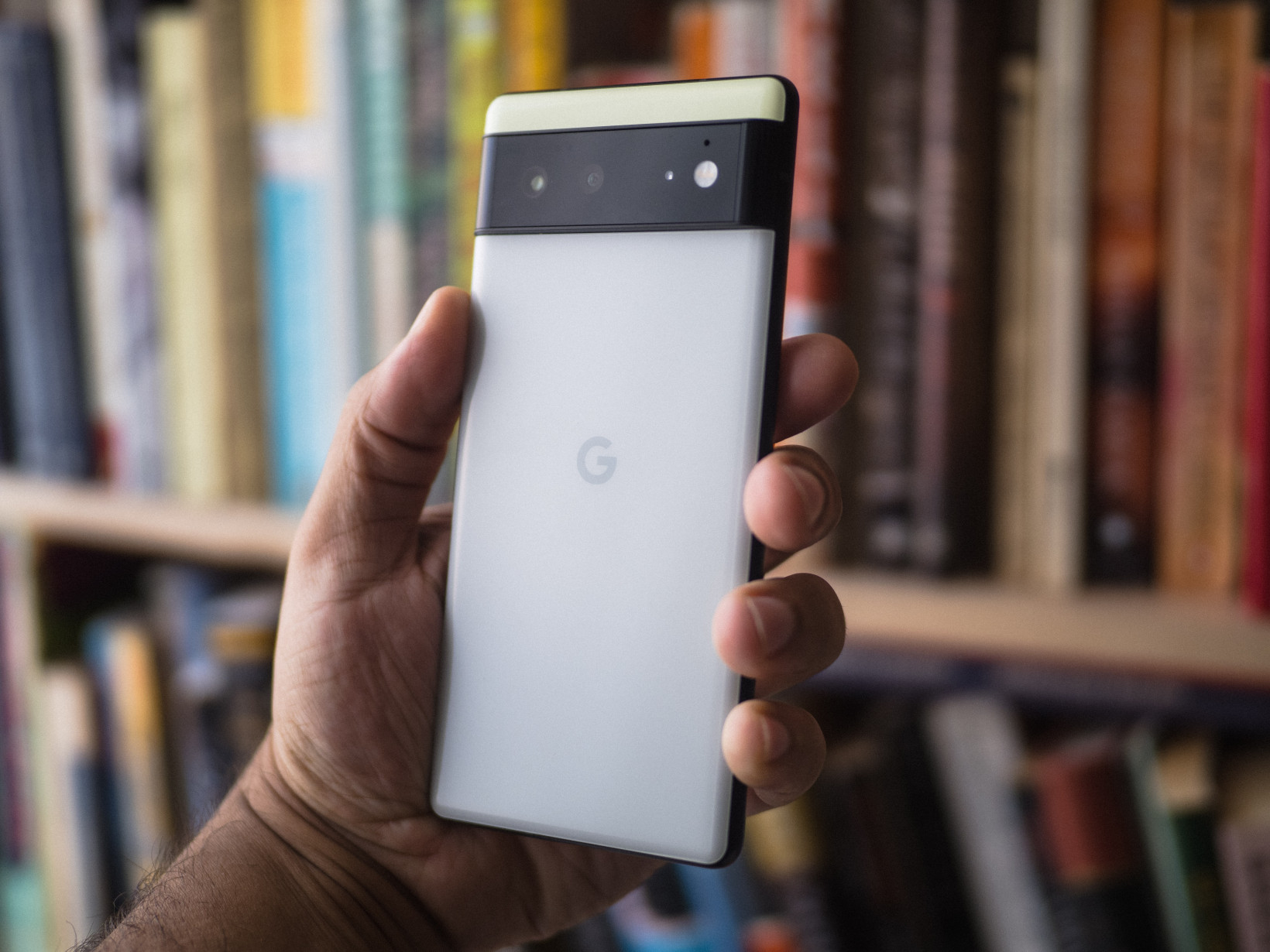
That said, I actually prefer the way the cheaper Pixel 6 looks. It has matte a matte metal frame, as opposed to the glossy finish on the Pro. It has a flat display, which I think looks cleaner than the Samsung-esque curved panel on the pro. And the accent colors on the rear glass are more vibrant too.

The design also extends to the software — Android 12’s Material U makes it easier to theme the phone around your wallpaper, including changing your icon’s colors to match.
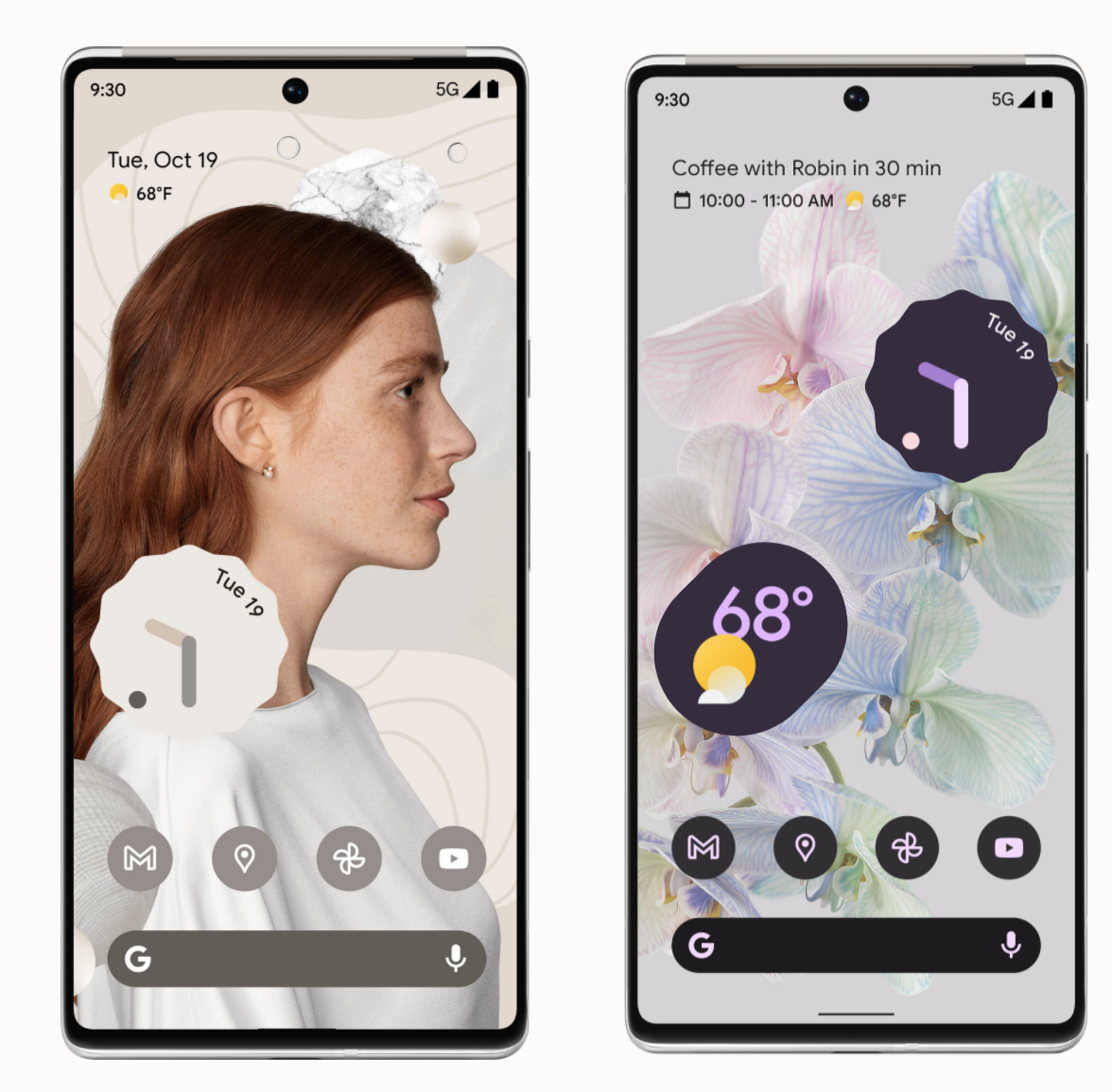
Software
Despite the emphasis on hardware, the end goal for Google Tensor is enabling new software tricks — especially in the camera and AI tasks.
Neat new features include the Magic Eraser, which makes it easy to remove distractions from the background, such as photobombers or trash. Google itself actually provides suggestions for what you might want to remove, or you can manually select those distractions.
There’s also a new Motion Mode, which basically lets you take an action photo with a slow shutter speed while keeping your subject sharp. It also lets you take long exposure shots at night.
Similarly, Face Deblur helps sharpen a subject’s face in a blurry photo by combining content from the ultrawide camera. The two cameras run in parallel, but the ultrawide runs at a faster shutter speed to keep subjects sharp. Google then uses that information to sharpen the face of the subject, even if other parts of the image are in motion.
Meanwhile, Real Tone is what Google is calling a feature that helps capture more accurate skin tones — especially for people of color. While I’m not sure that needed to be marketed as a separate feature, it’s nonetheless one of the improvements I’m most excited about.

As a person of color who has also worked as a professional photographer, one of my biggest frustrations is how cameras tend to struggle at handling non-white skin tones, because cameras have been designed for white skin for decades. The Pixel phones have been among the best I’ve found in smartphones, but still not quite there.
Google says it worked with top photographers of color in order to improve the training datasets for the Pixel 6, creating a pool of images that was “25 times more diverse.” Google claims the Pixel 6 was able to outperform the competition in blind tests about the accuracy of skin tones. The proof is in the pudding, of course.
Camera features aside, Google has made a number of other improvements:
- Live translate lets you immediately translate your speech and text, with processing happening right on your phone. You can watch YouTube videos in your native language, for instance, or use voice to reply to messages in another language.
- Before calling a toll-free business number, Google will show you the busiest hours with the longest wait times. Google can also interpret the automated menu options and allow you to simply tap on your screen for each option.
- You can now perform certain tasks via voice without saying ‘Hey Google,’ such as answering or rejecting a call or snoozing alarms.
The Pixel 6 and Pixel 6 Pro are available to pre-order today starting at $599 and $899, respectively. The phones will be available in stores starting October 28. Google is also offering hardware updates every two years as part of its new $55/mo Pixel Pass, which also includes Google One, YouTube Premium, Google Play Pass, and the Preferred Care repair plan.
The competitive pricing, coupled with the new camera tricks and powerful hardware, make these the most exciting Pixel phones since the original.
Get the TNW newsletter
Get the most important tech news in your inbox each week.

